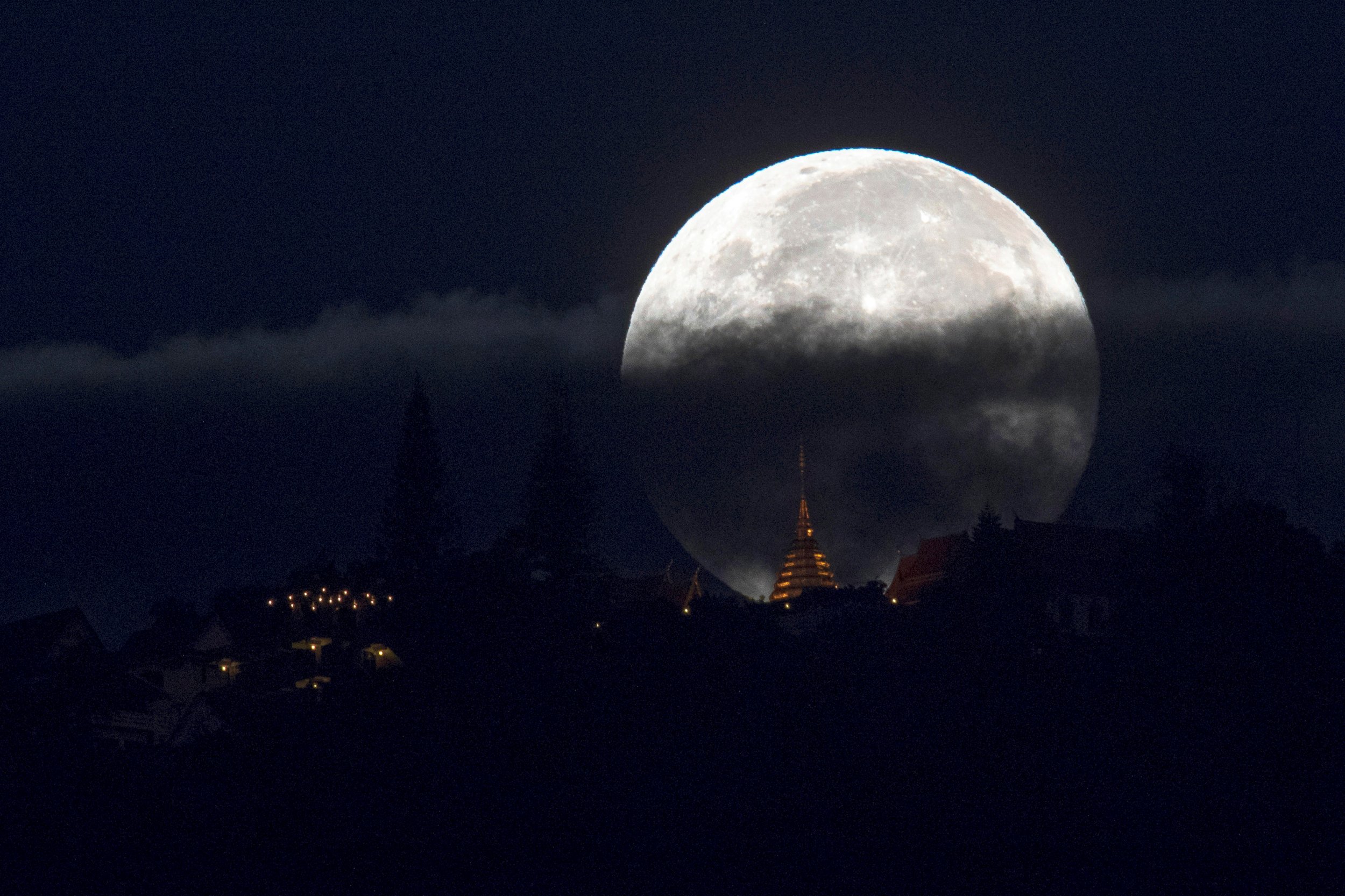
The first and only visible supermoon of 2017 will occur on the night of December 3, shining up to 16 percent brighter and 7 percent larger than normal, according to National Geographic.
Because the moon's orbit of the Earth is not perfectly circular, its distance from us varies. A supermoon occurs when perigree - the closest point to Earth in the moon's orbit - coincides with a full moon. This makes the moon appear larger and brighter in the sky than usual.
Budding astronomers on the East Coast need only stay awake until 4:00am ET on December 4 to see the moon at its nearest distance to Earth – a measly 222,443 miles. During the average apogee – when the moon is furthest from the earth – this distance stretches to roughly 252,000 miles, according to NASA.
Londoners will be able, for once, to make the best of the short winter days in their city, and observe the supermoon - or Full Cold Moon, as the last supermoon of the year is traditionally known - at 4:40 pm GMT. Romans can do the same at 5pm local time (GMT +1). Rome will also be the site of a live stream courtesy of the Virtual Telescope Project.
Urging the casual stargazer excited by the supermoon to adjust their expectations, the project's scientific director, astrophysicist Gianluca Masi said: "These are not really obvious variations, but they add charm to the event, a precious opportunity to admire our natural satellite in the night sky context, an increasingly overlooked and forgotten landscape."
To see the supermoon at its most vivid, however, make sure to catch a glimpse just after sunrise. A phenomenon called the "moon illusion" makes the celestial body look much larger than at its peak height.
If you live in Washington state, you may also be able to see the full moon pass over the bright star Aldebaran. According to Space.com, this "occultation" will be visible from Seattle, WS, at 6:09 a.m.The star will be visible again from 6:46am. Anchorage, Alaska will witness the occultation at 4:38, while Aldebaran will re-emerge at 5:32 a.m. This is just shy of the moon becoming full at 6.46am.
Around the world, you can spy the event from Northern Canada, Russia, China and Bangladesh.
Bigger than November's full Beaver Moon
While November didn't see a supermoon, it did give us the closest moon of the year so far in the full Beaver Moon. The Full Cold Moon will be the only moon of the year to dwarf November's, which reached around 227,000 miles from earth at perigree.
The closest moon to the earth in recent memory was 2016's supermoon, beating all supermoons since 1948, as the above video from NASA shows.
Don't fear if you miss December's supermoon, as January 2018 offers not just one but two. Make sure to look to the skies on the nights of January 2 and January 31st for the Full Wolf Moon and a Blue Moon.
Uncommon Knowledge
Newsweek is committed to challenging conventional wisdom and finding connections in the search for common ground.
Newsweek is committed to challenging conventional wisdom and finding connections in the search for common ground.
About the writer
Katherine Hignett is a reporter based in London. She currently covers current affairs, health and science. Prior to joining Newsweek ... Read more
To read how Newsweek uses AI as a newsroom tool, Click here.








